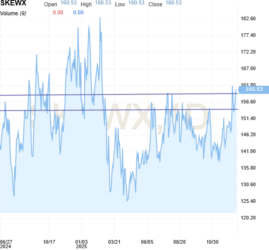ABN Amro har analyseret svækkelsen af den 10-årige amerikanske obligationsrente og inflationsudsigterne. De udtrykker, at det begyndende opsving er i indregnet i priserne. ABN Amro tolker det på den måde, at den amerikanske centralbank vil vente med at sætte renten i vejret. Der vil tidligst komme en rentestigning i 2023, og først i de følgende to-tre år vil der kommer mærkbare rentestigninger.
Is the recovery now priced into US Treasury yields?
US Rates: Yields have moved lower, despite strong macro data –
Last Thursday, strong retail sales figures came out, which took the series to a level that was far above the pre-pandemic trend (see here). Nevertheless, yields on US Treasuries decreased, which raises the question whether the recovery is now priced into the US Treasury market.
To judge this, it is important to assess the level of inflation expectations and whether it matches the likely outcomes over coming years as well as the rate hike cycle priced into financial markets. Inflation expectations (as measured for instance by the Fed’s 5y5y measure) are above the levels seen in 2018, when the US economy was already at full employment. Meanwhile, markets seem to have priced in a rate hike cycle with an eventual peak in the coming years at 2.3%, which is also close to the previous peak.
However, the rate hike cycle is expected to start earlier than we expect (see below) and much earlier than the Fed is signalling. On this basis, markets seem to have been advanced and arguably had run too far in pricing in the recovery story.
As far as the Fed’s behaviour in this cycle goes, we judge that the new make-up strategy – where the Fed is aiming at a moderate overshoot of inflation for a time – does not seem to be fully digested by financial markets. This together with a relatively ambitious and broad-based definition of full employment suggests it will take longer than markets currently expect for the Fed to hike rates.


We revise our US rates forecast upwards, but stick to less rate hikes compared to the market –
We have revised our US rates forecasts upwards, as we expect some of these expectations and Fed policy are going to linger for some time. On the one hand, we judge that the Fed will raise the Federal Funds rate later and more slowly compared to the market.
Indeed, we have pencilled in the first rate hike in late 2023 and two more in both 2024 and 2025, whereas the market is now pricing in more than 1 additional rate hike by the end of 2025 as shown in the graph below.
Although we do expect inflation to pick up in the medium term, we expect this to be moderate and take time to build. The output gap is likely to close by early next year, but full employment will not be reached until 2023. As we saw in the previous cycle, even a very tight labour market did not trigger a significant acceleration of inflation.
On the other hand, we don’t see a trigger point in the near term that would lead to a pricing out of multiple rate hikes, as US macro data is expected to remain buoyant for a time. Hence, we expect that US 10y Treasury yields will move in a range until the end of 2022. However, we do expect 2y yields to move up during the course of next year as the first rate hike comes into view. This means that we expect the US treasury curve to bear flatten.






